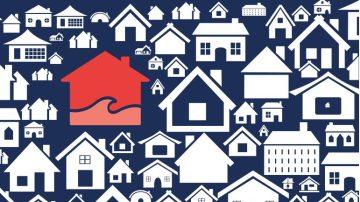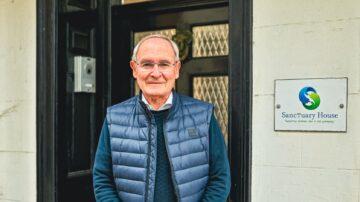On World Homeless Day, Jersey Homelessness Strategic Board warns of a ticking time bomb for low income families.
Sky-high house prices leave thousands of families stuck in ever increasing and expensive private rentals and the cost of living crisis is pushing the most vulnerable into homelessness. But the true number of remains unknown.
Simon Burgess, the independent Chair of the Jersey Homelessness Strategic Board said: “The 10th October marks World Homeless Day (WHD) and an opportunity to draw attention to the needs of people who experience homelessness in Jersey, whilst highlighting that we still do not know the full scale of the problem.
“WHD provides opportunities for Islanders to get involved in responding to homelessness, and to ask our politicians what they are doing to understand the true extent of homelessness and how they propose to improve policies to tackle the causes, not just the symptoms.”
A year on since the Minister for Housing and Communities presented his Definition of Homelessness to the States (on 7 October 2022) the full scale of homelessness in Jersey remains unclear. The introduction of a homelessness definition was the first recommendation of the Board’s Homelessness Strategy published in November 2020. Collating data to evidence the scale and nature is now needed.
John Hodge, director of The Shelter Trust, which provides emergency hostel accommodation in Jersey explained: “What is known is that too many people are finding themselves with no option but to ask for temporary overnight accommodation provided by one of five Jersey charities.
“The Government’s homelessness definition sets out 13 categories of homelessness, but without reliable data to identify the categories that are most affected, the Government will continue to be in the dark in trying to formulate preventative polices.”
People staying in temporary hostels fall into only three of Government’s 13 homeless categories. The other ten categories are wide reaching meaning people are defined as homeless if they are ‘roofless’ or if they are living in insecure or inadequate housing. Roofless homelessness includes rough sleepers and those living in insecure accommodation includes people ‘sofa-surfing’, in illegal occupation, with no legal tenancy, under threat of eviction or under threat of violence.
People are also defined as homeless if they live in inadequate accommodation, including temporary structures, unfit housing and subject to extreme overcrowded accommodation.
Whilst waiting for the Government to collect homeless data, the Jersey Homelessness Strategic Board and the five accommodation providers have taken the initiative to collate data available to them.
The Board has now published quarterly flash reports since the beginning of 2023, available here. The results are startling.
- During the first nine months of the year 313 people were accommodated and a further 33 people were unable to be given a bed at their chosen hostel.
- During the first 9 months of the year, 353 sought refuge with one of the five accommodation providers. Of these, 160 people were already accommodated, a further 160 were then accommodated and 33 people were unable to be accommodated at their chosen hostel.
- The average length of stay was six months and the majority were men, accounting for 70% accommodated.
- Local Jersey people made up the vast majority in need of help with over 79% holding ‘Entitled’ housing qualifications. 90% were of working age and 27% were employed (rising to 46 in the third quarter), and typically working fulltime.
- The reasons for needing accommodation are varied, but the most common being as a result of living in unsafe or insecure housing, domestic violence and relationship breakdown. This accounted for 50%. Eviction was also a material driver accounting for 13% of people accommodated with an increase reported every quarter in 2023.
- Young people, the future life-blood of the Island, are not immune either with a quarter of all people accommodated being under the age of 25.
Terry Morel, Chair of Jersey Women’s Refuge commented: “We know the statistics given in the Quarterly Flash Reports are just the tip of the iceberg.
“There is ‘hidden homelessness’ throughout the Island and more needs to be done to identify its true extent and refine policy that targets preventive measures”.
















